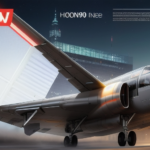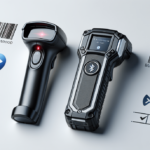History of Scanning Technology
Scanning technology has undergone significant transformations since its inception, evolving from rudimentary photoelectric scanners to sophisticated 3D imaging systems. Understanding the history of scanning provides insight into its current applications and future potential.
Early Innovations
The origins of scanning technology can be traced back to the early 20th century with Russian inventor Vladimir K. Zworykin's development of the first photoelectric scanner. This device utilized a beam of light to detect varying shades of gray in images, converting them into electrical signals. This breakthrough laid the groundwork for the first fax machines, which relied on photoelectric scanners to transmit images over long distances.
Advancements in the 1960s and 1980s
In the 1960s, the advent of computers spurred the creation of optical scanners that employed lasers to read data from paper documents, primarily for industrial and scientific purposes like reading punch cards. The 1980s witnessed the introduction of flatbed scanners, which allowed users to digitize larger documents and photographs without specialized equipment, making scanning technology more accessible to the general public.
Evolution and Advancements in Scanning Technology
The progression of scanning technology has been marked by continuous innovations that have expanded its capabilities and applications across various fields.
Digital Age and CCD Sensors
With the rise of the digital age in the 1970s, charge-coupled device (CCD) sensors revolutionized flatbed scanners, enabling high-resolution and accurate image scanning. This advancement enhanced the quality and reliability of digital images.
Optical Character Recognition (OCR)
The 1980s and 1990s saw the integration of OCR software with scanners, allowing the conversion of printed text into digital data. This development facilitated the creation of searchable documents, significantly impacting office workflows and information management.
Handheld and 3D Scanners
The early 2000s introduced handheld scanners, offering portability and convenience for on-the-go scanning needs. More recently, 3D scanners have emerged, capable of creating detailed digital models of physical objects, with applications in manufacturing, healthcare, and entertainment.
Importance of Scanning Technology in Modern Industries
Scanning technology is integral to numerous industries, enhancing efficiency, accuracy, and innovation in various processes.
Healthcare
In healthcare, scanners such as MRI and CT machines produce detailed images of the body's internal structures, aiding in accurate diagnoses and treatment planning. Additionally, digital scanners help manage medical records and track equipment.
Retail and Inventory Management
Retailers utilize barcode and QR code scanners to manage inventory, track sales, and streamline the checkout process, improving both operational efficiency and customer experience.
Manufacturing and Logistics
In manufacturing, scanners monitor production processes and manage inventory levels. In logistics, they track shipments and optimize delivery routes, ensuring timely and efficient distribution of goods.
Technical Aspects of Scanning Technology
Scanning technology integrates various components and software to capture and interpret data, each playing a crucial role in its functionality.
Components of a Scanner
Scanners typically consist of sensors (such as CCD or CIS), light sources, and moving mechanisms. For example, flatbed scanners use CCD sensors to capture reflected light from documents, while barcode scanners employ lasers to read barcodes.
3D Scanning Techniques
3D scanners utilize methods like structured light or laser triangulation to capture the shape and texture of objects. These techniques enable the creation of precise digital models used in design, prototyping, and virtual reality applications.
Software and Data Processing
Scanning software plays a vital role in processing the captured data, enhancing image quality, and extracting meaningful information. Advanced software may incorporate machine learning algorithms to improve accuracy and automate object recognition.
Social and Ethical Implications of Scanning Technology
While scanning technology offers numerous benefits, it also raises important social and ethical considerations.
Privacy Concerns
The use of scanners in surveillance and monitoring systems can infringe on individual privacy rights. Ensuring responsible use and implementing robust data protection measures are essential to address these concerns.
Ethical Use in Healthcare
In medical settings, the ethical use of scanning technology involves obtaining informed consent and safeguarding patient data. Additionally, there is a need to balance the benefits of advanced imaging with potential risks.
Future of Scanning Technology
Advancements in scanning technology continue to expand its applications and improve its capabilities, promising exciting developments in the near future.
Integration with Artificial Intelligence
Artificial intelligence (AI) is transforming scanning technology by enabling real-time data analysis, anomaly detection, and predictive maintenance. AI-powered scanners can enhance accuracy and efficiency across various applications.
Virtual Reality and Augmented Reality
The convergence of scanning technology with virtual reality (VR) and augmented reality (AR) is creating immersive experiences and simulations. 3D scanned environments and objects can be explored and interacted with in virtual spaces, revolutionizing fields like education, training, and entertainment.
Urban Planning and Smart Cities
Future scanning technologies may facilitate the creation of detailed digital replicas of entire cities, aiding in urban planning, infrastructure development, and sustainable design practices. This could lead to more efficient and responsive urban environments.
Market Trends and Challenges
The global scanning technology market is experiencing rapid growth, driven by increasing digitalization and diverse industry applications. However, several challenges must be addressed to sustain this growth.
Growth Drivers
- Rising demand for digital data and information management
- Expansion of applications in healthcare, manufacturing, and retail
- Advancements in 3D and AI-powered scanning technologies
Challenges
- Intense competition and the need for continuous innovation
- Regulatory compliance and data security concerns
- Addressing ethical and privacy issues related to scanning applications
Conclusion
Scanning technology has evolved remarkably over the past century, transforming various industries and enhancing our interaction with the digital world. From its early days as a tool for capturing simple images to today's advanced 3D and AI-integrated systems, scanning technology continues to drive innovation and efficiency. As we look to the future, addressing ethical concerns and embracing technological advancements will be crucial in harnessing the full potential of scanning technology to improve lives and industries globally.






















